"Queen of the fields," so once called a valuable food culture - corn. Delicious and useful delicacy in the form of boiled milk pillars is unlikely to leave someone indifferent. And grown personally, on its site, corn will seem doubly tastier.
At the same time, it is absolutely unpretentious in care, and its hybrid varieties allow to cultivate the plant not only in the warm southern regions, but also in cold climatic zones. How to plant corn? What are the landing conditions? How to grow corn to collect a good harvest? All major conditions and a fierce plant of planting and plant care are in this selection of material.
Corn, plant description
- Corn is an annual plant of the cereal family, reaching height to 3 or more meters.
- Herbal plant, corn, originally from America. In Europe, it began to grown from the 20th century. Wide popularity around the world, this culture has won due to valuable food, feed and technical properties.
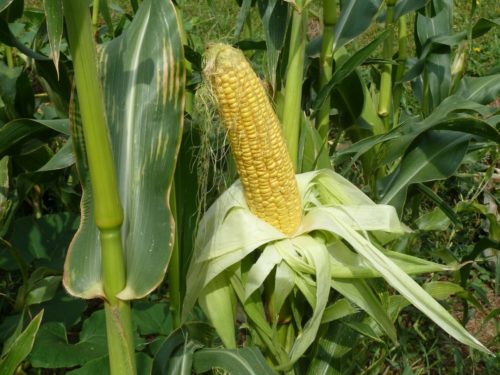
- The root corn system is well developed, allowing you to hardly hold the tall culture in the ground. The base of the stem often is often formed by air roots, also perform the reference and fixing function.
- Stem in corn straight, thickened (5-7 cm in diameter), dense.
- Large elongated corn leaves wrap the stem at the base, forming a peculiar sinus. Length, leaf plate can reach up to one meter.
- Corn - cross-peeled plant. Spikelets are collected in the separation of inflorescences. Makeup or pillage. Female inflorescences, cobs, develop from sinuses of leaves and are tightly surrounded by multi-layer sheet wraps with a bunch of filamentous pestile columns (hairs). It is this part of corn and is the most valuable and in demand. The mass of the cob varies depending on the variety of corn and the period of its maturation (from 30 g to 0.5 kg).
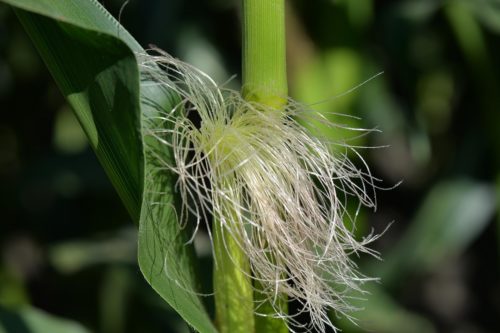
- Corn fruit is represented by a grain. Rows of grains are tight pressed to the cable rod and have a rounded-cubic shape. Coloring grains is usually yellow, although there are varieties and purple, red, blue and black centers.
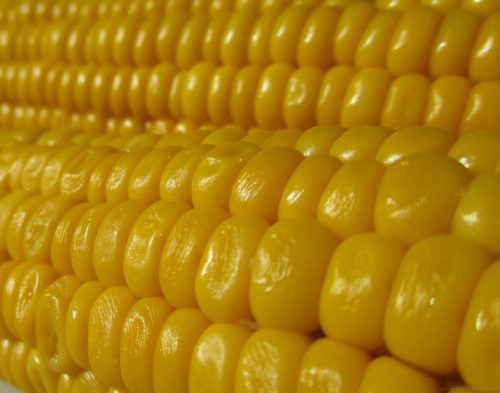
Useful properties of corn
- The corn contains a lot of substances useful for the human body: Vitamins K, D, PP, C, B, Potassium, phosphorus, copper, nickel, magnesium, iron, microelements and minerals.
- Regular use of corn reduces the likelihood of the development of cardiovascular diseases, stroke, diabetes.
- Using corn cobs in food, you should know that overripe grains are absorbed by the body badly. In addition, it is not recommended to use corn to people who are contraindicated by the bowl of the intestine (for example, during the exacerbation of peptic ulcer).
- Corn storks have valuable medical properties: stimulate the removal of bile, the activation of the liver and pancreas. Therefore, this culture is highly in demand in the pharmaceutical industry.
- Corn leaves contain a number of useful substances and elements, being a valuable feed.
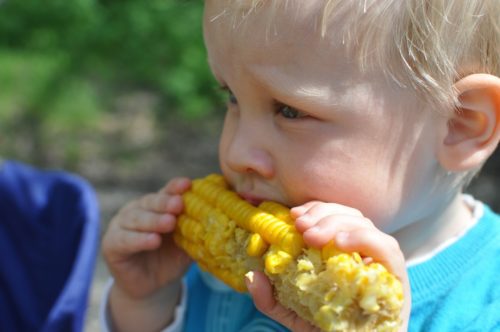
Corn, Plant Features
- Corn refers to light and thermo-loving plants. Currently cultivated hybrid varieties of corn with increased cold resistance, allowing culture even in the northern regions.
- During the ripening of the cobs, there are several periods of their ripeness. If the culture is used in food, you need to tear young and soft cobs that have a pleasant sweet taste. If the plant is used to feed livestock, subsequent processing and storage - solid and rided cobs are used.
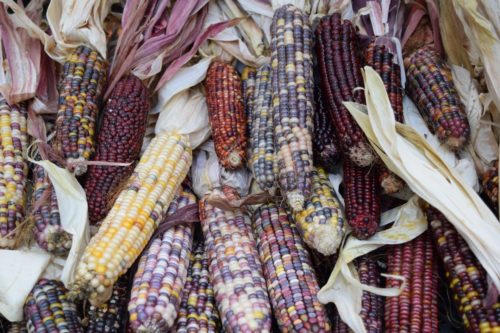
Corn species and varieties
Currently, many types of corn are cultivated. Consider the most famous of them:
- Sugar corn is considered the most delicious, its varieties are used in food, the grains are preserved. Such popularity of culture is explained by the presence of water-soluble sugars in the grains. The view is actively used to eliminate new hybrid varieties of corn.
- Silicon corn is grown for subsequent processing. From it make flour, cereal, flakes, cornstands. White and yellow grains are distinguished by a smooth shiny surface.
- The dental corn is indispensable as a feed of a cattle, alcohol and croup are also prepared from it. The grains of this species are large, elongated, with a deepening, making them similar to the teeth of a person. Catherine color is diverse.
- Bumping corn is the perfect raw material for popcorn. Frames are most famous from the subspecies, rice and pearl corn.
- Starchy corn is used mainly for the manufacture of starch. Smooth matte grains have a characteristic convex top.
As for the varieties, the most common and possessing high quality characteristics are the following varieties:
- Gourmet 121 is a high-yielding food grade, whose cobs are characterized by a juicy sweet taste. The variety is resistant to many diseases, relatively low (1.5 m).
- Dobrynya - hybrid early grade, unpretentious and resistant to disease. Differs in large cobs and high taste.
- Pioneer is a representative of a siliceous view of corn. High yield allows you to grow grade for processing and feeding a cattle. At the same time, it is distinguished by low taste.
- Spirit - Sweet, High-Three Corn Grade. Puffed grains juicy and gentle. The hybrid is resistant to diseases and typical pests of corn, suitable for growing in different climatic zones. It is distinguished by superranched fertility (2-2.5 months).
- Sinenta is a cold-resistant representative of dental corn, contains a number of nutrients and trace elements. Such valuable qualities make it possible to use this hybrid for the manufacture of corn cereals and the feed of the cattle.
- Early Golden 401 is a midvertal variety with a characteristic sweet collar grain. Widely used in food and for canning.
- Erlikon - Burning grade, with high sugar content. Popcorn is a large, elastic, excellent taste.
- Sandens - a low-spirited early food corn grade with large cobs. Yellow elongated grains have a pleasant taste, apply to food both in fresh and canned form. The hybrid is suitable for cultivation in cold climatic zones.
- Hoppi is an unusual variety of black and purple color. High taste with walnut aftertaste makes a variety of original and popular in the food industry. Cubes prepare chips, drinks, cereals, applied in cosmetology.
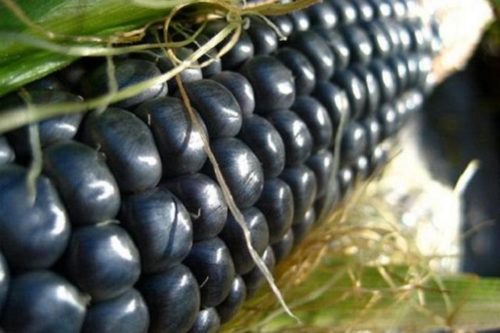
- Swift - a dwarf exotic variety of early maturation. Grains are delicious, sweet.
- Triple sweetness is an exceptionally sweet and gentle variety, it is distinguished by unpretentious when growing.
- Violetta is a purple hybrid variety, with pleasant delicate taste.
How to choose corn grade?
In order to grow high-yielding corn with the necessary high-quality characteristics, it is important to correctly pick up the grade of culture.
- For the landing, it is better to purchase a variety of local selection or proven izonated varieties of corn.
- When choosing a variety, it is necessary to take into account the climatic conditions in which corn will be grown and the presence of appropriate qualities at the variety. So, for the middle strip of Russia, early cold-resistant hybrid varieties will be suitable.
Planting Corn: Agrotechnology Rules
- To get the highest harvests, and at the same time you do not depless the soil, it is worth remembering such a thing as "crop rotation" when the competent alternation of crops is taken into account when landing. This question is relevant for corn.
- Corn predecessors should be grain or leguminous crops. Under the conditions of vegetable garden, it is preferable to grow mudflows, tomatoes, potatoes, cucumbers, any root crops on this place.
- After planting corn, greens will grow at this place (dill, sage, basil), as well as beets and zucchini.
Place and time landing corn
- Place for planting thermal-loving corn is better to choose a sunny, open, windless. Created to lighting, the plant will not be able to fully grow and be fron in the shade.
- Corn fruitfully develops on light drained air-permeable soils with sufficient moisture content. And, although the culture is not too picky in terms of the soil, the best option will be a fertile nourishing soil with close grounding of groundwater. To "facilitate" tight soil, sand or a special substrate, which improves the soil aeration - vermiculite is added to it.
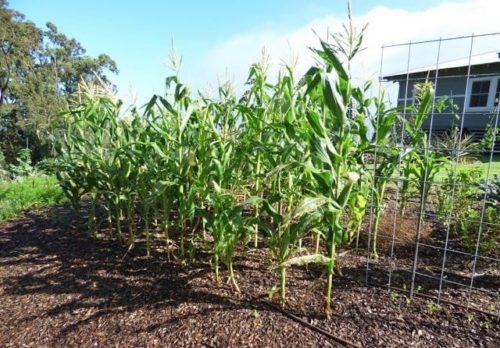
Time and conditions of planting corn to open primer for different regions are different.
- In the northern regions plant varieties with a short period of vegetation and a high level of cold resistance. Moreover, for this climatic zone it is best suited quickly heated sulace soil type. Also most acceptable option with the cultivation of corn seedlings.
- In the southern warm regions, on the contrary, it is preferable to stop on moisture-intensive sublinks. Dates of crops in different climatic zones are shifted for 2-3 weeks, depending on weather conditions. It is not worth a hurry with sowing if the soil is cold or expected return freezes. At temperatures below + 10ºC, the seeds will not sprout, and shoots will stop in development. In this case, temporary shelter is required (greenhouse, film).
Preparing seeds of corn
- Preparing for the sowing season, corn seeds need to be sorted, calibrated, removing damaged and defective corn grains.
- Before sowing, the seeds should be prepared in a certain way or "wake up": at first they are heated about 4-5 days at a temperature of + 35 ° C, and then soaked for a day in a slight warm water. Pumping seeds can also be on filtered paper or fabric bag. The main thing is not to dip the grains for a long time in the water, otherwise they will be charged. You can simply lay out the grains of corn to a wet substrate (cotton wool, march) and watch them every day so that they do not swam.
- Many gardeners are recommended to grind seeds not just in water, but in solid ash sol. In this case, the ash acts as a source of minerals and stimulates the germination of seeds. Seeds are placed in a bag of fabric or gauze and lowered (not completely) into a solution of ash. The solution is shaking daily, until the first sprouts appear.
- To prevent the occurrence of fungal diseases and additional routs, the seeds can also be treated with a fungicide or a mortar solution (withstand 20 minutes).
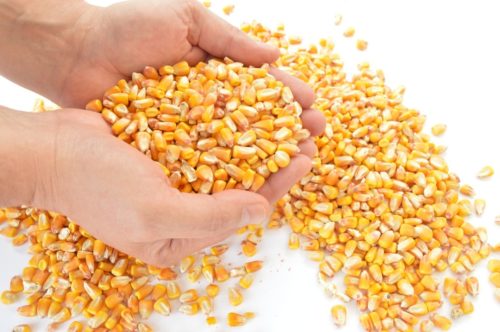
Schemes landing corn
- The classic planting scheme of corn in private garden attracted seed landing by rows into the wells of 2 grains. The estimated interval between the rows is 40-50 cm, between plants in the ranks - 35-40 cm.
- For convenience, a joint planting scheme of corn seeds with cucumbers or other curly cultures is practiced. Such a useful symbiosis significantly saves the area, reduces the risk of diseases, protects cucumbers from strong winds, binding on Earth. In addition, the strong meal stems of corn are a frame and support for concomitant crops. Moreover, legume plants (beans, peas) are planted directly into the holes with corn grains, and the seeds of cucumbers are sowing near, 30 cm from a row of corn. These joint fits increase the load on the soil and require additional feeding with organic and mineral fertilizers (especially nitrogen).
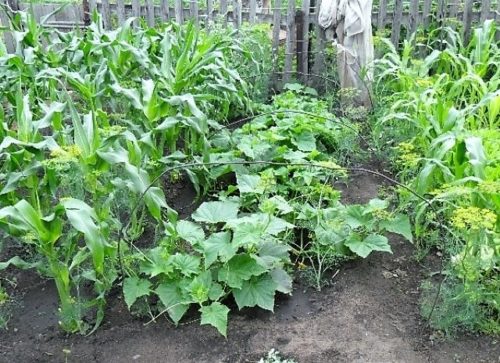
- Experienced gardeners use the so-called square-nesting method during seed crops. At the same time, the distance between the plants is left in all directions 45 cm. In the prepared moisturized wells, there are 3 grains at once, and after their germination, the strongest and dear seedanese is left.
- There is a conveyor method of planting seeds, allowing to collect a harvest continuously, throughout the season. For this, grade varieties with different maturation dates and planted them in series, with an interval of 2 weeks.
- Applying one or another landing scheme, the main thing to plant cross-polluted corn is not one single side. To eliminate the problems with pollination and tying, you need to plant corn grains into several rows.
- Planting corn should not be too thick or rare. And in the first, and in the second cases, the corn yield is significantly reduced.
- Corn can be sown directly into open soil or planting pre-seedlings.
Sowing corn to open ground
- Before sowing, it is necessary to properly prepare the soil. For this, in the fall, they provide deep soil resistance with the introduction of overwhelming manure (compost). In the spring, crust and large lumps of the Earth are spilled with robbles, while heavy soil is better to "alleviate" by adding crushed chille or straw into it. In addition, nitrogen-containing fertilizers can be added to the soil before planting (for example, nitroposka).
- Sowing seeds is carried out in spring, during the period when the soil stably warms up to + 10-12 ° C. Approximately, this time falls for April-May (depending on the region).
- On the aligned loose plot, wells or rows are made according to the selected landing scheme, a depth of no more than 7 cm. The depth of seed seedings is determined by the type of soil and the preparedness of seeds to landing. Dogged swollen seeds in wet soil require no more than 3-4 cm sealing, while dry grains are somewhat deeper.
- One hole is better to throw several grains at once to be guaranteed to get a friendly germination of seedlings. In addition, with a good germination, there will be the opportunity to proper seedlings, leaving the strongest and viable. This rule does not concern in advance germinated seeds for landing.
- Seeds are sprinkled first with a damp soil, dry dry. The first shoots of corn appear about 2 weeks after landing.
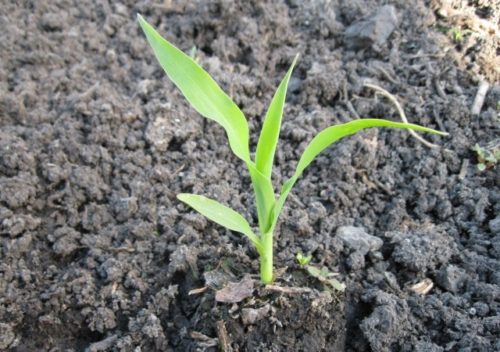
Sowing corn to seedlings
- The period of development of seedlings on average is 1 month, so seeds are seeded at the end of April - early May.
- For seedlings, special cassettes are used with cells, peat pots, humorous - land or peat-earth sabs and ordinary disposable cups. Landing in the bags is convenient because the seedlings are originally isolated from each other and the roots are practically not damaged during transplantation.
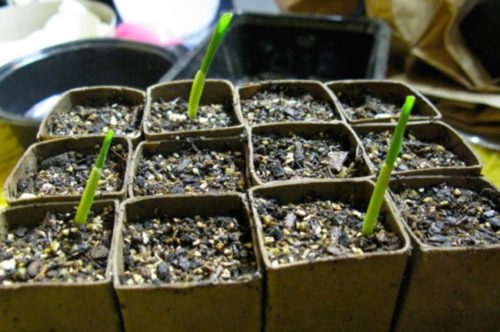
- Light universal soil from the ground, sand and humories are taken as a substrate for seedlings. For seedlings, only germinated corn seeds are suitable. Corn grains are shortened shallow, 2-3 cm, topped with sand. You can additionally cover the container with a film. At the same time, it is important not to forget to regularly air seedlings, and after the first searches appear - and remove at all.
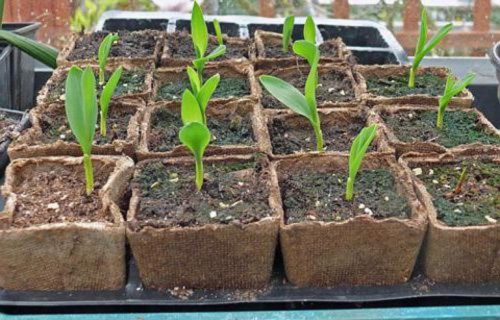
- The main conditions for successful cultivation of any seedlings: moderate watering, feeding, loosening, sufficient lighting and necessary temperature regime. In this case, the room temperature is not respected below + 20-25 ° C. After the appearance of germs, the temperature decreases.
- When seedlings are growing a little, the seedlings are thinned, leaving in the cell 1 strong sighter. During this period, it may be necessary to need additional lighting of sprouts.
- Growing seedlings, in phase 2-3 leaves, it is better to bore it with complex fertilizers, such as polyfe or teraflex. Additional nutrition will significantly accelerate the growth and development of seedlings.
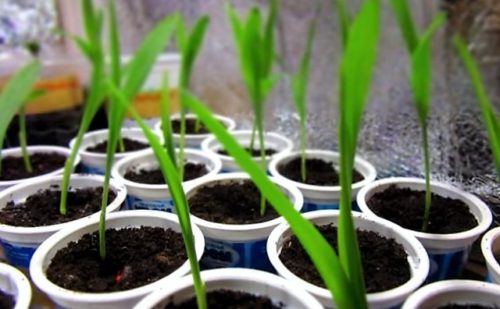
- 1-1.5 weeks before the seedling seedlings in open ground, it is hardened in the fresh air, gradually increasing the duration of the procedure.
- Corn seedlings poorly carry a transplant, so they do not need to dive. Having planted on the bed, it is necessary to fully maintain the land of the earth around the seedling so as not to damage the gentle roots of the plant.

- After transplanting, the plant is watered, and the soil is mulch with sand in order to avoid crust formation.
- Growing seedlings, it is impossible to extract it, since then the risks of non-peculiarity of seedlings in the open soil increase then.
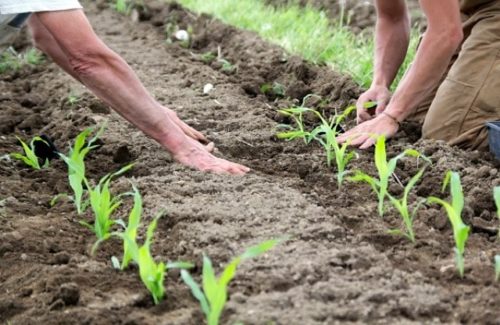
Growing corn, plant care
Although corn is considered an unpretentious culture, nevertheless its cultivation requires a certain care and has its own specific features.
So, in case of insufficient pollination, gardeners can independently help the culture of "dose". To do this, it is enough to rip on the top of the "Men's Meltels" stem and shake them over the "female cobs" so that pollen fell on the inflorescence, and the fetus will occur.
In addition, corn needs to be removed by side shoots - steps. Otherwise, the development of young cobs and the overall growth of the plant will linger.
The remaining agricultural activities, such as watering, loosening, feeding also directly affect corn yield.
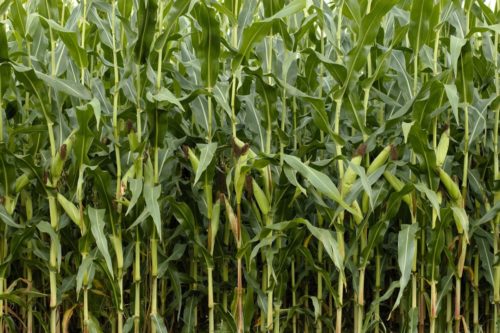
Watering corn
- Watering the moisture-living corn must be regularly, moreover, it is better to practice infrequent, but abundant watering. For example, with dry weather, you can stick to such a scheme: Watering 1 time per week so that the soil layer of wet is 10-15 cm.
- During the growth of seedlings, there are moderate watering, when there are 7 or more leaves on the plant - the amount of irrigation gradually increase. Especially important is the moisturizing of the soil in the initial phase of the maturation of the cobs so that the grains are formed and poured throughout the rod, and the rided pillage did not get half empty.
- Stagnation or constant oversupply of moisture adversely affects the plant: the roots die, the leaves are painted in purple tones, growth slows down, the yield falls.
- The system of drip irrigation of the soil has proven well. At the same time, water falls right under the root of the plant, which ensures constant moisturizing of the soil and significant water savings.
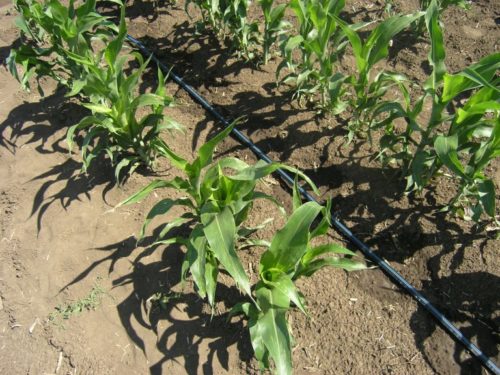
Loosening corn
- Corn needs mandatory tidwing and soil looser, especially after abundant irrigation. Swimming significantly improves soil aeration.
- With the loosening of adult cultures, it is important not to damage the apparent roots. During this period, the corn is needed.
Undercabe corn
- Although in the period of the preparation of the soil to landing corn to the garden, organic fertilizers were made, culture still needed additional feeding.
- During the growing season, organic (compost, humid) and mineral fertilizers (superphosphates, potash fertilizers, ammonia nitere) should be made several times.
- Nitrogen-containing complexes are made to the ripening of seeds. Potash feeders are better to carry out the maturation of the cob, in the spring or early summer. Phosphorus is also shown by culture throughout the season, in small doses.
- The lack of trace elements can be traced in the appearance of corn. With a lack of nitrogen - the leaves become pale, the plant ceases to grow up. When the leaves are painted in purple tones, you can talk about the lack of phosphorus. And wavy, brownish color, the leaves flashes about the lack of potassium.
- Corn, increasing the green mass throughout the growing season, and, forming the cob, significantly depletes the soil. Therefore, fertilizers - an integral and mandatory part of the agrotechnical process of growing corn.
Fighting pests and corn diseases
- Corn is subject to, for the most part, infection with various diseases and attack insect pests.
- Often, especially in a rainy period, corn is sick of fusariosis of shoots and cobs. At the same time, the sprout appeared and dies, and the grains of the milk cage are darker and destroyed. Infected grains can not be used as sowing material. To avoid the disease, the seeds need to be treated with a fungicidal preparation before sowing into the soil.
- Helmintosporosis affects the leaves and cobs, forming dark spots on them with a clear border and a sage chamber in the center. To prevent the disease, seeds before sowing and soil are treated with fungicide.
- If yellow stains appeared on the bottom side of the sheet with ripening disputes on them - the corn "fell ill" rust. Preventive measure will be all the same pre-sowing treatment with a fungicidal drug.
- Dusty head - a well-known infectious disease, affecting corn inflorescences and cobs. The bubble head is manifested by the appearance on the cobs and the leaves of corn numerous bubbles. In order to prevent diseases, it is important to comply with the rules of the crop rotation and carry out the processing of seeds before sowing.
- Also known different types of corn rotes: stem, root and red rotten rotors. In order to avoid damage to corn, preventive measures and directly treating corn during the period of infection with fungicides.
- Corn pests are most dangerous to the wires, scoops, moths and oat swedish flies. To effectively combat pests, it is necessary to comply with competent crop rotation, dry grain before sowing insecticides, use pheromon traps, process the plant insecticidal preparation.
Corps cleaning
- You can collect harvest at the stage of the dairy or complete maturity of corn cobs, depending on the need. Only young, not overrehered maps of corn are suitable.
- Ripe solid cobs are used on a cattle feed and for collecting seeds (landing).
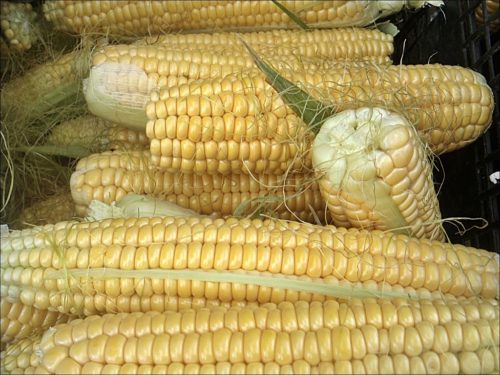
Observing all the designated agrotechnical techniques and the rules of cultivation of corn, it can be easily achieving high yields of tasty and useful culture.

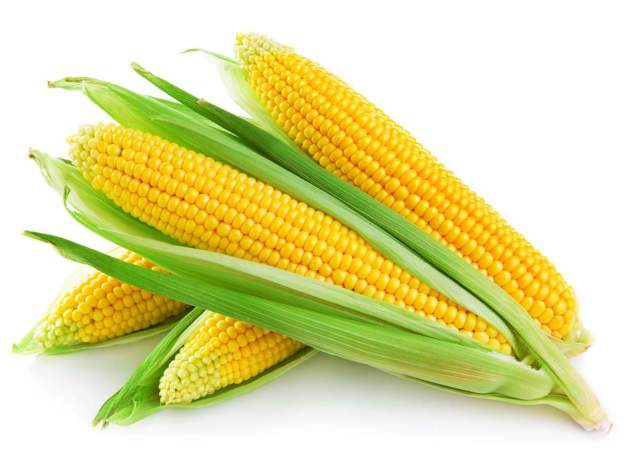
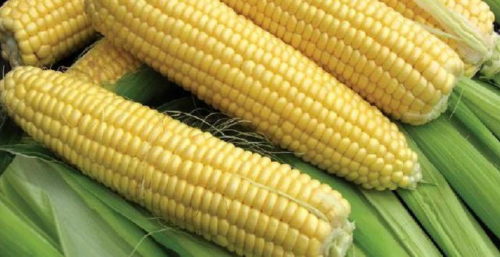
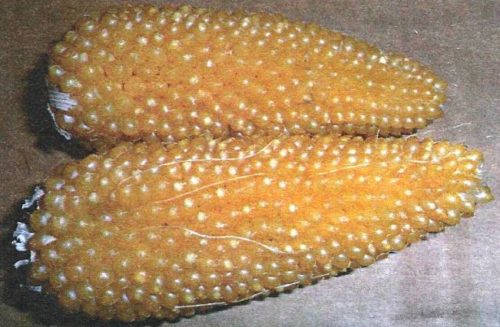
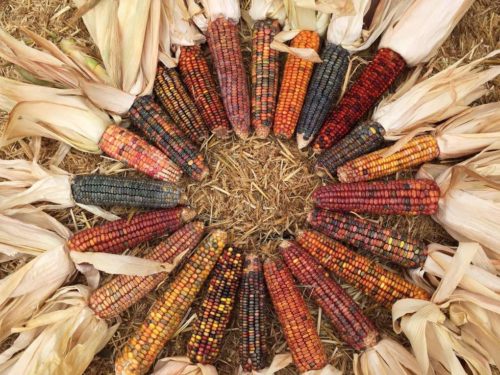
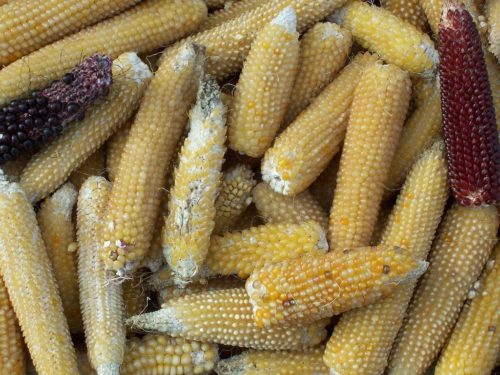
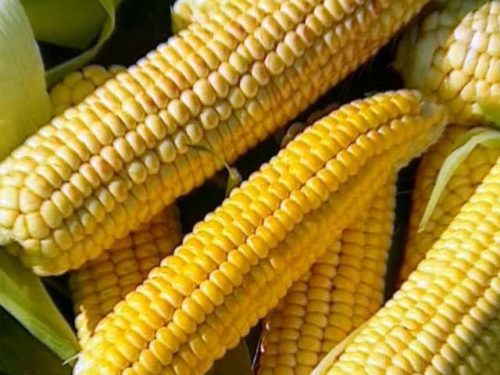
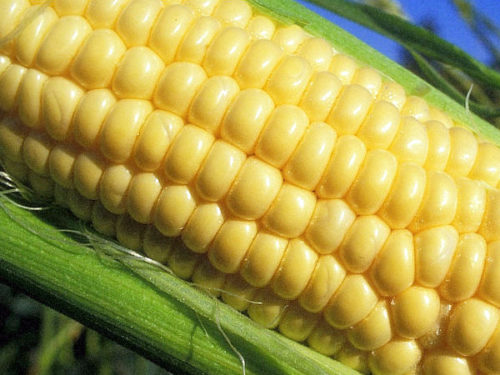
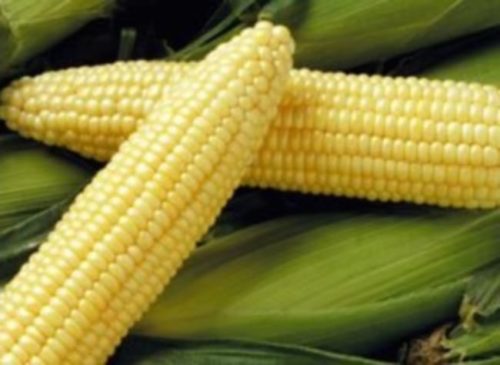
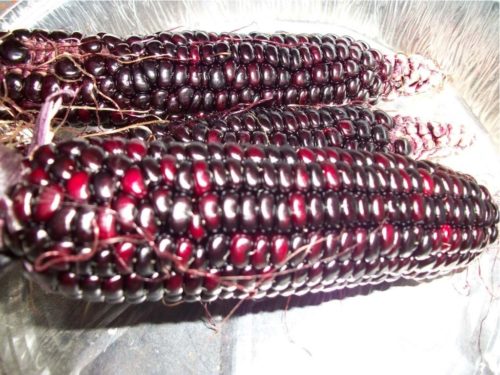
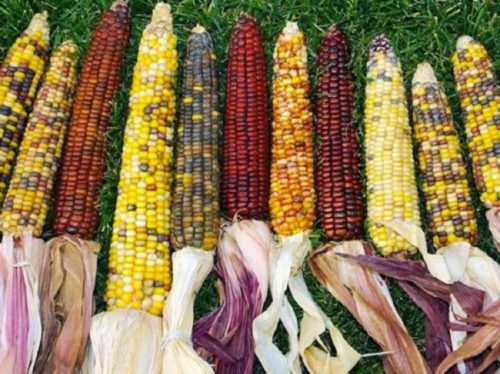
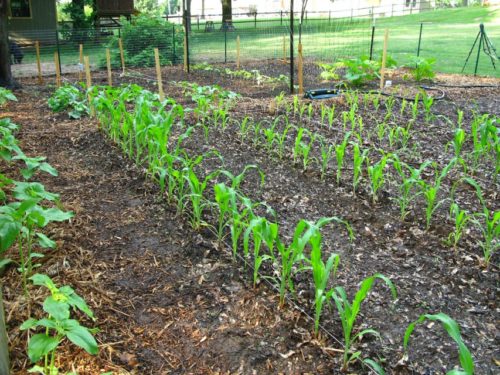
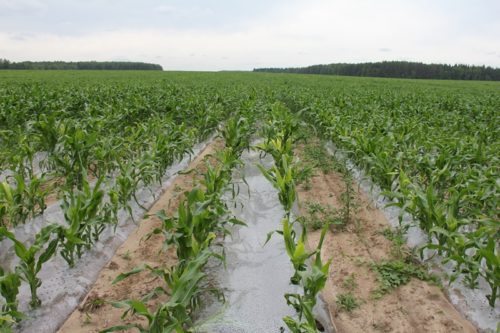
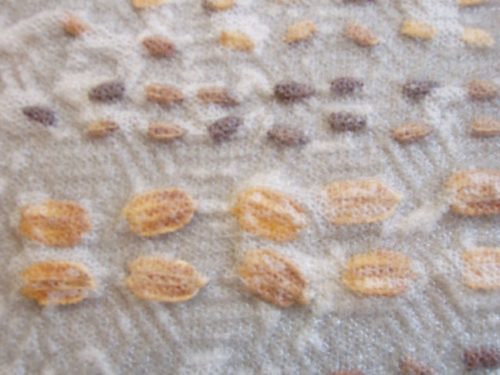
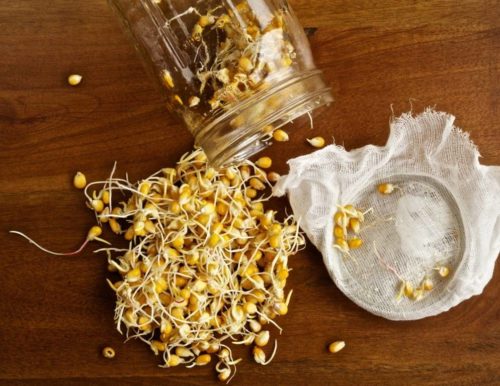
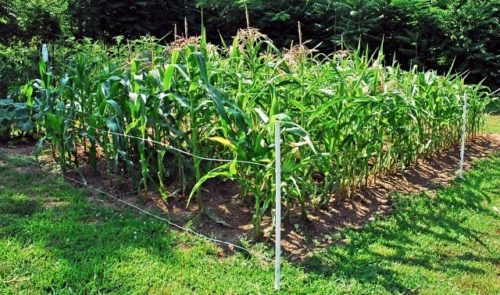
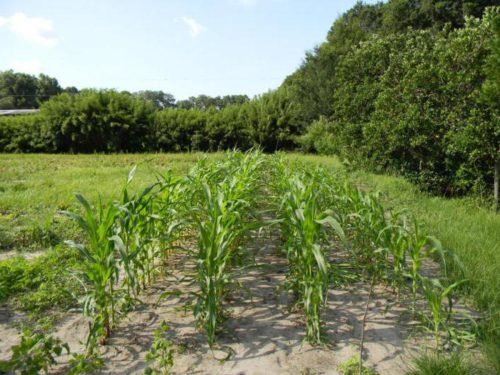
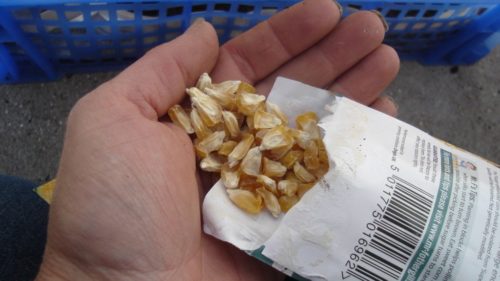
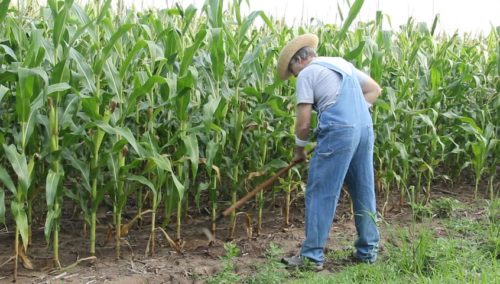
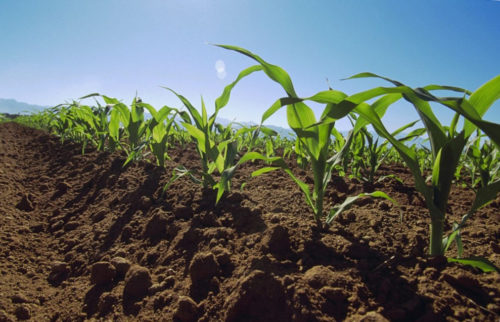
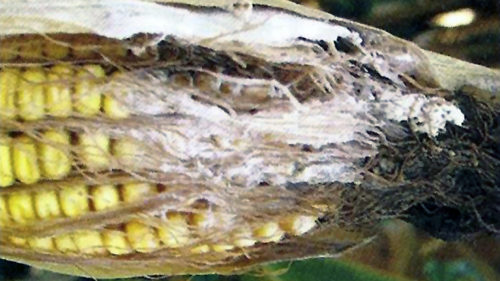
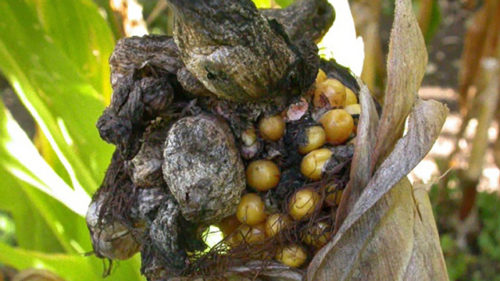
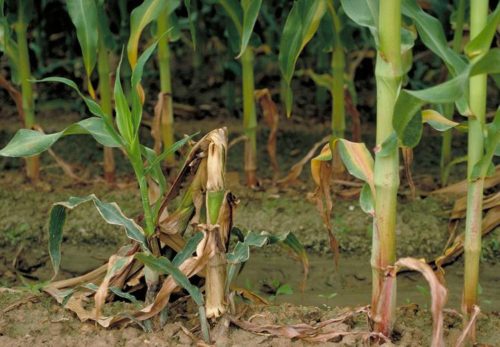
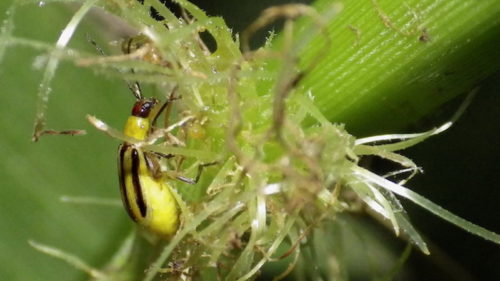


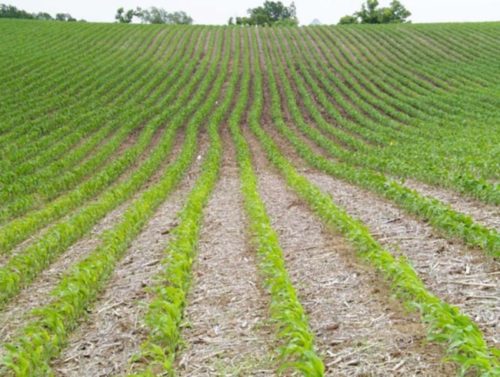
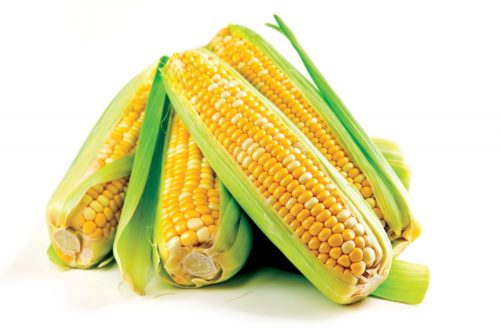
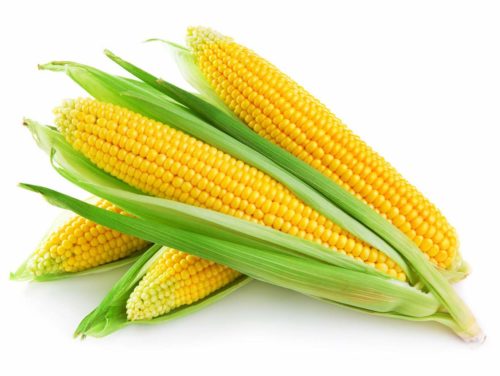












 Start a discussion ...
Start a discussion ...